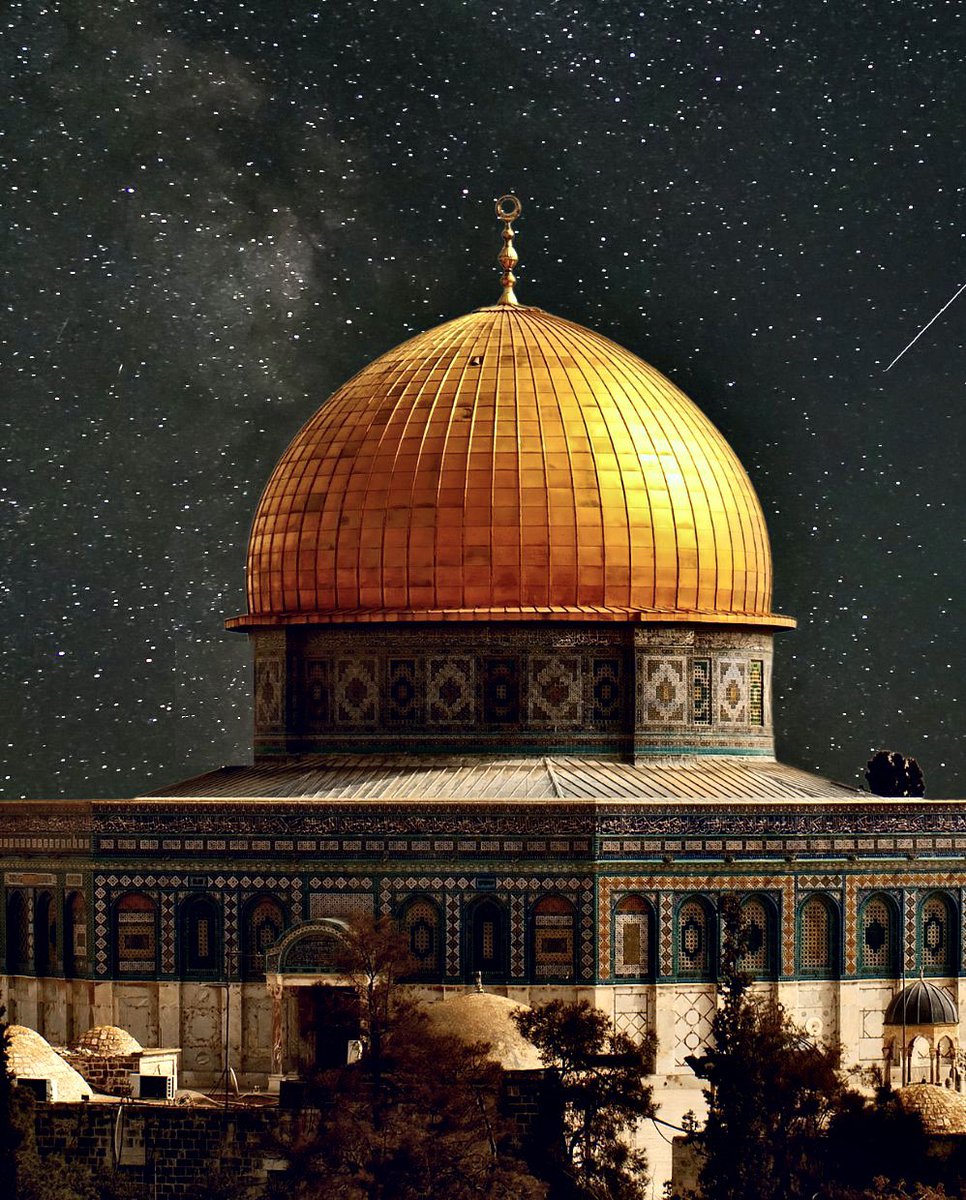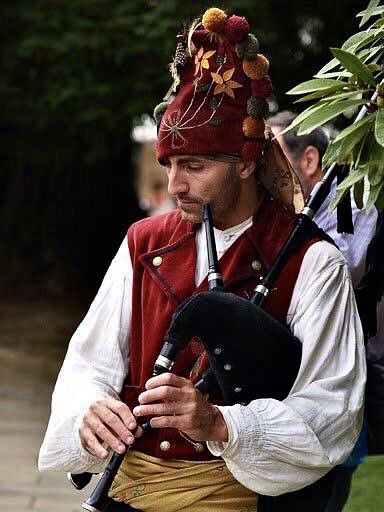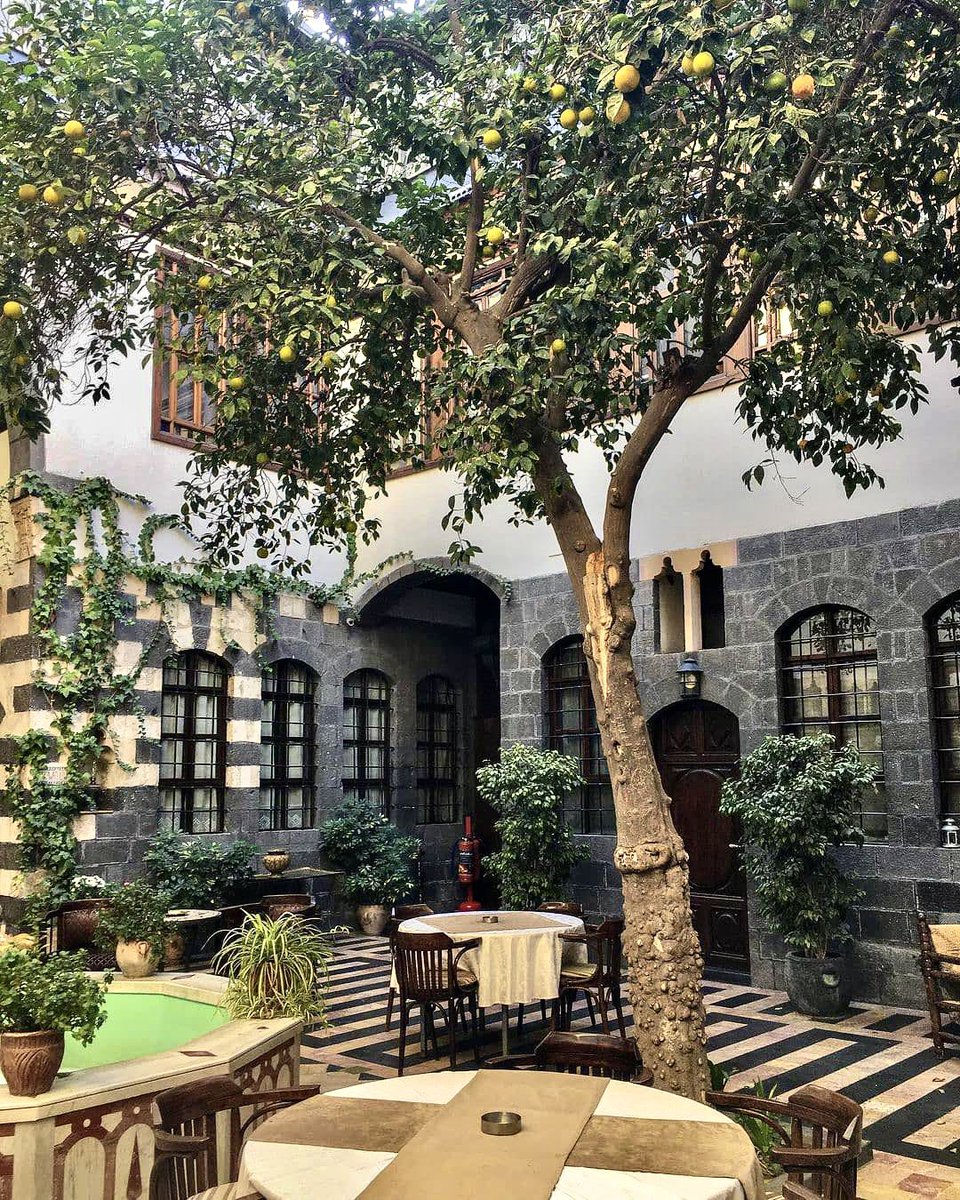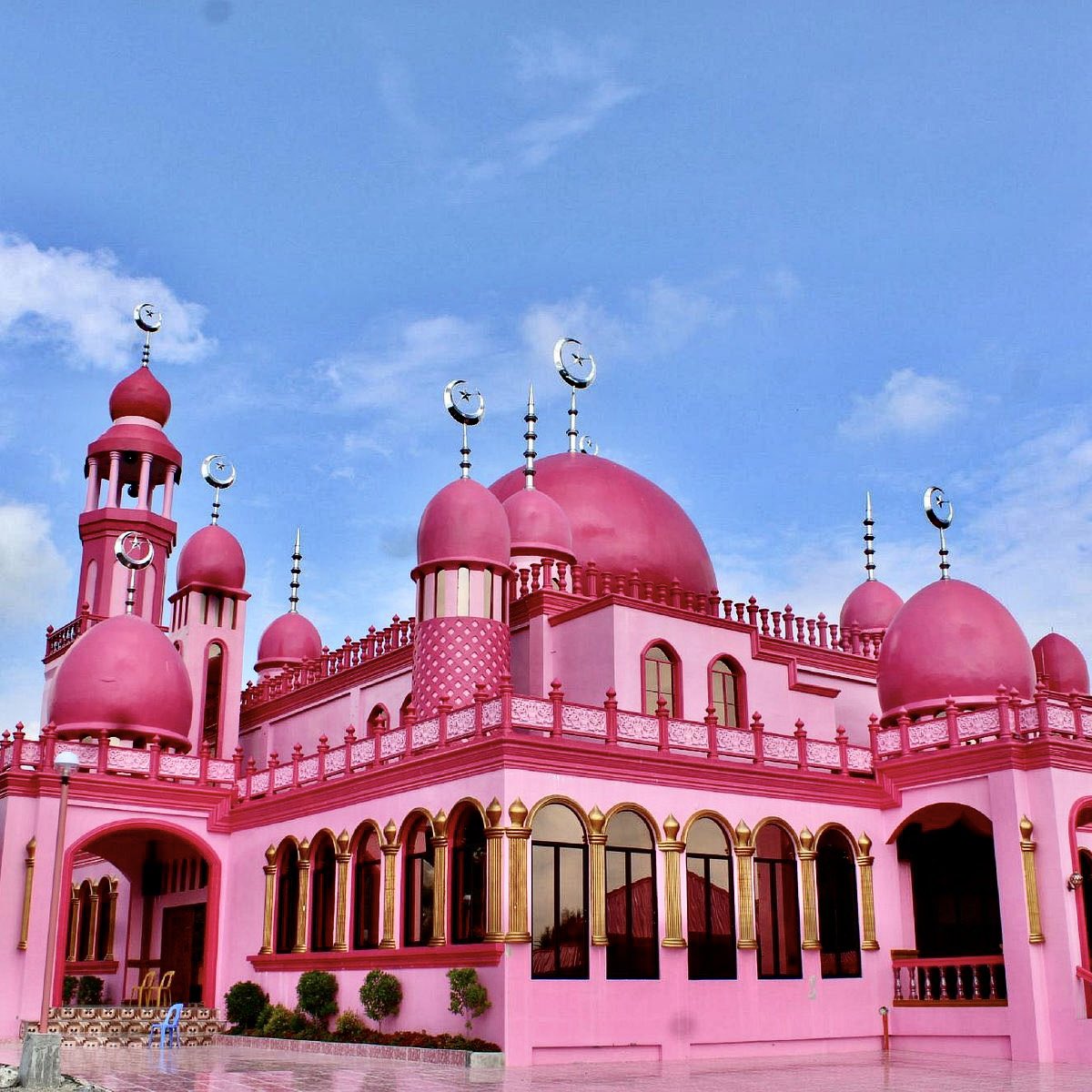
From Senegal to Ghana, to Egypt to Somalia, Africa is known for its unique mosques – each an architectural masterpiece in their own right.
Here are 24 of the most extraordinary & ancient mosques in Africa, each a reflection of the local building styles #JummahMubarak
A thread…
Here are 24 of the most extraordinary & ancient mosques in Africa, each a reflection of the local building styles #JummahMubarak
A thread…

1/ The Mosque of the Companions, Massawa, Eritrea. early 7th century CE
Did you know this was the first mosque built in the continent of Africa?! It is believed to be the first mosque on the African continent.
Did you know this was the first mosque built in the continent of Africa?! It is believed to be the first mosque on the African continent.

2/ Masjid al-Qiblatayn, Zeila, Somaliland, 7th century
Built after the hijrah, the migration of the early followers of Prophet Muhammad (PBUH) to Abyssinia. Now mostly in ruins, it is one of the oldest mosques in Africa & contains the tomb of Sheikh Babu Dena
Built after the hijrah, the migration of the early followers of Prophet Muhammad (PBUH) to Abyssinia. Now mostly in ruins, it is one of the oldest mosques in Africa & contains the tomb of Sheikh Babu Dena

3/ Al Nejashi Mosque, Negash, Ethiopia, 7th century
Negash is synonymous with Islam as it is the place where the first Muslim settlement took place in the world. It houses the tombs of the companions of Prophet Muhammad PBUH & is dubbed by Ethiopian Muslims as the second Mecca
Negash is synonymous with Islam as it is the place where the first Muslim settlement took place in the world. It houses the tombs of the companions of Prophet Muhammad PBUH & is dubbed by Ethiopian Muslims as the second Mecca

4/ Al-Azhar Mosque, Cairo, Egypt, 970
One of the oldest and most important mosques in Egypt. It is considered a source for enlightenment. The cornerstone of Al-Azhar Mosque was laid on Ramadan 14, 359 AH - 970
One of the oldest and most important mosques in Egypt. It is considered a source for enlightenment. The cornerstone of Al-Azhar Mosque was laid on Ramadan 14, 359 AH - 970

5/ Great Mosque of Djenné, Mali, built 13th c. current structure 1907
World’s largest mud-brick building & finest example of Sudano-Sahelian architecture; characterised by its adobe plastering & wooden scaffolding. The walls are reconstructed with mud each April in a 1 day event
World’s largest mud-brick building & finest example of Sudano-Sahelian architecture; characterised by its adobe plastering & wooden scaffolding. The walls are reconstructed with mud each April in a 1 day event

6/ The Fakr Ad-Din Mosque, Somalia, 13th century
Also known as Masjid Fakhr Ad-Din, the 2nd oldest mosque in Somalia after Masjid al-Qiblatayn (Somaliland). It is located in Hamar Weyne mogadishu, the oldest part of the city. It is believed to be the 7th oldest mosque in Africa
Also known as Masjid Fakhr Ad-Din, the 2nd oldest mosque in Somalia after Masjid al-Qiblatayn (Somaliland). It is located in Hamar Weyne mogadishu, the oldest part of the city. It is believed to be the 7th oldest mosque in Africa

7/ The Great Mosque of Kairouan, Tunisia, 670
One of the oldest Muslim place of worship in Africa, over a millennia, founded in the year 670. Also known as the Uqba Mosque, it illustrates the mixed influences of pre-Islamic, Roman, and Byzantine architecture.
One of the oldest Muslim place of worship in Africa, over a millennia, founded in the year 670. Also known as the Uqba Mosque, it illustrates the mixed influences of pre-Islamic, Roman, and Byzantine architecture.

8/ The Gobarau Minaret, Katsina, northern Nigeria, 14th century
Gobarau is one of the largest buildings in West Africa, with its construction believed to have been completed during the reign of King Sarkin Katsina Muhammadu Korau (1398-1408 AD) the first Muslim King of Katsina
Gobarau is one of the largest buildings in West Africa, with its construction believed to have been completed during the reign of King Sarkin Katsina Muhammadu Korau (1398-1408 AD) the first Muslim King of Katsina

9/ Bou Inania Madrasa, Fes, Morocco, 1350–55 CE
Built in 1350–55 CE by Abu Inan Faris. It is the only madrasa in Morocco which also functioned as a congregational mosque. Widely acknowledged as a high point of Marinid architecture & of historic Moroccan architecture generally
Built in 1350–55 CE by Abu Inan Faris. It is the only madrasa in Morocco which also functioned as a congregational mosque. Widely acknowledged as a high point of Marinid architecture & of historic Moroccan architecture generally

10/ Mosque of the Seven Sleepers, Chenini, Tataouine, Tunisia
Where the sleepers are allegedly buried: in the surroundings of the masjid some uncommonly large tombs (about 4 meters long) are visible.
Where the sleepers are allegedly buried: in the surroundings of the masjid some uncommonly large tombs (about 4 meters long) are visible.

11/ Agadez Mosque, Agadez, Tchirozerine Department, Niger, 1515
It was made of clay and is the tallest mud-brick structure in the world. The city was built in 1515 at the time when the city was captured by the Songhai Empire. It was restored and some of it was rebuilt in 1844
It was made of clay and is the tallest mud-brick structure in the world. The city was built in 1515 at the time when the city was captured by the Songhai Empire. It was restored and some of it was rebuilt in 1844

12/ Great Mosque of Kilwa, Lindi Region of Tanzania, 10th century
The Great Mosque of Kilwa is a great example of Swahili architecture. It is one of the earliest surviving mosques on the Swahili coast and is one of the first mosques built without a courtyard
The Great Mosque of Kilwa is a great example of Swahili architecture. It is one of the earliest surviving mosques on the Swahili coast and is one of the first mosques built without a courtyard

13/ Larabanga Mosque, Ghana, early 1400s
Founded by one of the Prophet’s (PBUH) Companions, Ibrahim Ayuba al-Ansari, who was sent there from al-Madinah. Built in the Sudanese architectural style, it is the oldest in the country & one of the oldest in West Africa
Founded by one of the Prophet’s (PBUH) Companions, Ibrahim Ayuba al-Ansari, who was sent there from al-Madinah. Built in the Sudanese architectural style, it is the oldest in the country & one of the oldest in West Africa

14/ Chinguetti Mosque, Adrar, Mauritania, 13th-14th century
The minaret of this ancient structure is supposed to be the second oldest in continuous use anywhere in the Muslim world. The mosque is popularly considered the national emblem of the Islamic Republic of Mauritania
The minaret of this ancient structure is supposed to be the second oldest in continuous use anywhere in the Muslim world. The mosque is popularly considered the national emblem of the Islamic Republic of Mauritania

15/ The Atiq Mosque or al-Kabir mosque, the oasis village of Awjila, in the Sahara desert of the Cyrenaica region, Libya, 12th century
The oldest in the region. It has unusual conical domes made of mudbrick & limestone that provide light & ventilation, with palm tree posts
The oldest in the region. It has unusual conical domes made of mudbrick & limestone that provide light & ventilation, with palm tree posts

16/ The Mosque of Ibn Tulun, Cairo, Egypt, 879
One of the oldest mosques in Egypt as well as the whole of Africa surviving in its full original form & is the largest mosque in Cairo. It features ancient architecture styles of Egypt, being created from carved stucco and wood
One of the oldest mosques in Egypt as well as the whole of Africa surviving in its full original form & is the largest mosque in Cairo. It features ancient architecture styles of Egypt, being created from carved stucco and wood
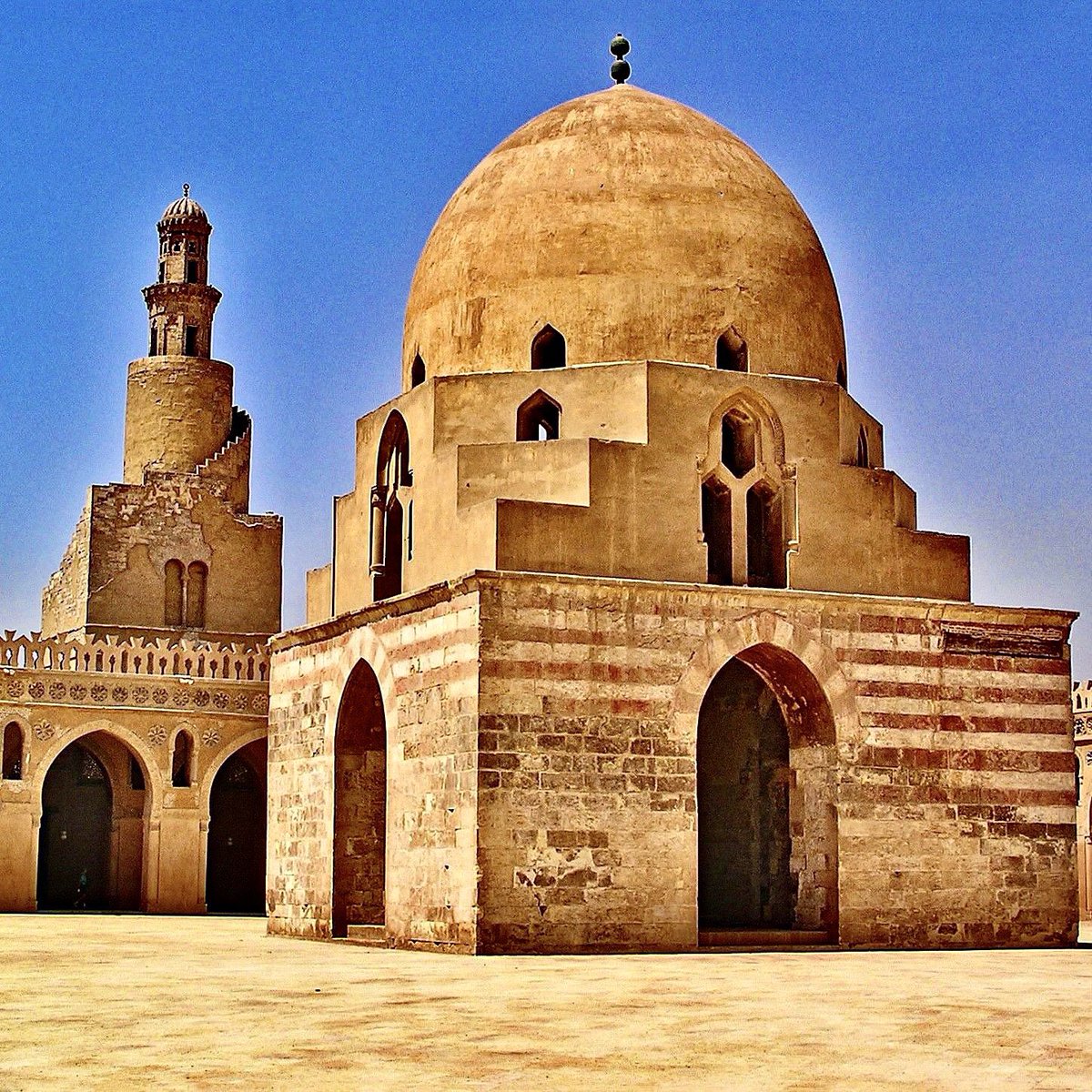
17/ Djinguereber Mosque, Timbuktu, Mali, 1327
A famous learning center of Mali, cited as Djingareyber or Djingarey Ber in various languages. Its design is accredited to Abu Ishaq Al Saheli who was paid 200 kg (40,000 mithqals) of gold by Musa I of Mali emperor of the Mali Empire
A famous learning center of Mali, cited as Djingareyber or Djingarey Ber in various languages. Its design is accredited to Abu Ishaq Al Saheli who was paid 200 kg (40,000 mithqals) of gold by Musa I of Mali emperor of the Mali Empire

18/ The Great Mosque of Fes el-Jdid, Fes, Morocco, 1276
It is the historic main Friday mosque of Fes el-Jdid. It is believed to have been founded by the Marinid sultan Abu Yusuf, around the same time that the city itself was founded, making it the oldest mosque in Fes el-Jdid
It is the historic main Friday mosque of Fes el-Jdid. It is believed to have been founded by the Marinid sultan Abu Yusuf, around the same time that the city itself was founded, making it the oldest mosque in Fes el-Jdid

19/ The Great Mosque of Kano, Nigeria, 15th century
The great mosque was built for Muhammad Rumfa. It was made of mud, and was of the soro, or tower, variety.[1] It was moved to a new site by Muhammad Zaki in 1582, and rebuilt in the mid 19th century by Abdullahi dan Dabo
The great mosque was built for Muhammad Rumfa. It was made of mud, and was of the soro, or tower, variety.[1] It was moved to a new site by Muhammad Zaki in 1582, and rebuilt in the mid 19th century by Abdullahi dan Dabo

21/ Minaret of Hamoudi mosque (1906), City of Djibouti, Djibouti
Every city has at least one iconic building, and this is the closest thing to it in Djibouti city what with the mosque's size and prominent location above the main square
Every city has at least one iconic building, and this is the closest thing to it in Djibouti city what with the mosque's size and prominent location above the main square

22/ The Great Mosque of Testour, the city of Testour, Beja Governorate, Tunisia, 1631
The mosque embodies Andalusian architecture, especially its minaret, which features Andalusian style inscriptions & architectural elements. The height of the minaret is 23 meters
The mosque embodies Andalusian architecture, especially its minaret, which features Andalusian style inscriptions & architectural elements. The height of the minaret is 23 meters

23/ Khatmiyah Mosque, Kassala, Sudan, 18th century
At the base of the Taka Mountains is this spectacular mosque, centre of the Khatmiyah Sufi sect. It's a lovely mudbrick building with a pointed octagonal minaret and a photogenic arcade of columns in the main prayer hall
At the base of the Taka Mountains is this spectacular mosque, centre of the Khatmiyah Sufi sect. It's a lovely mudbrick building with a pointed octagonal minaret and a photogenic arcade of columns in the main prayer hall

24/ The Great Mosque of Touba, Senegal, 1887
Founded by Amadou Bamba in 1887 and completed in 1963. Bamba died in 1927 and is interred inside the mosque. It is the largest building in the city and one of the largest mosques in Africa, with a capacity of 7,000
Founded by Amadou Bamba in 1887 and completed in 1963. Bamba died in 1927 and is interred inside the mosque. It is the largest building in the city and one of the largest mosques in Africa, with a capacity of 7,000
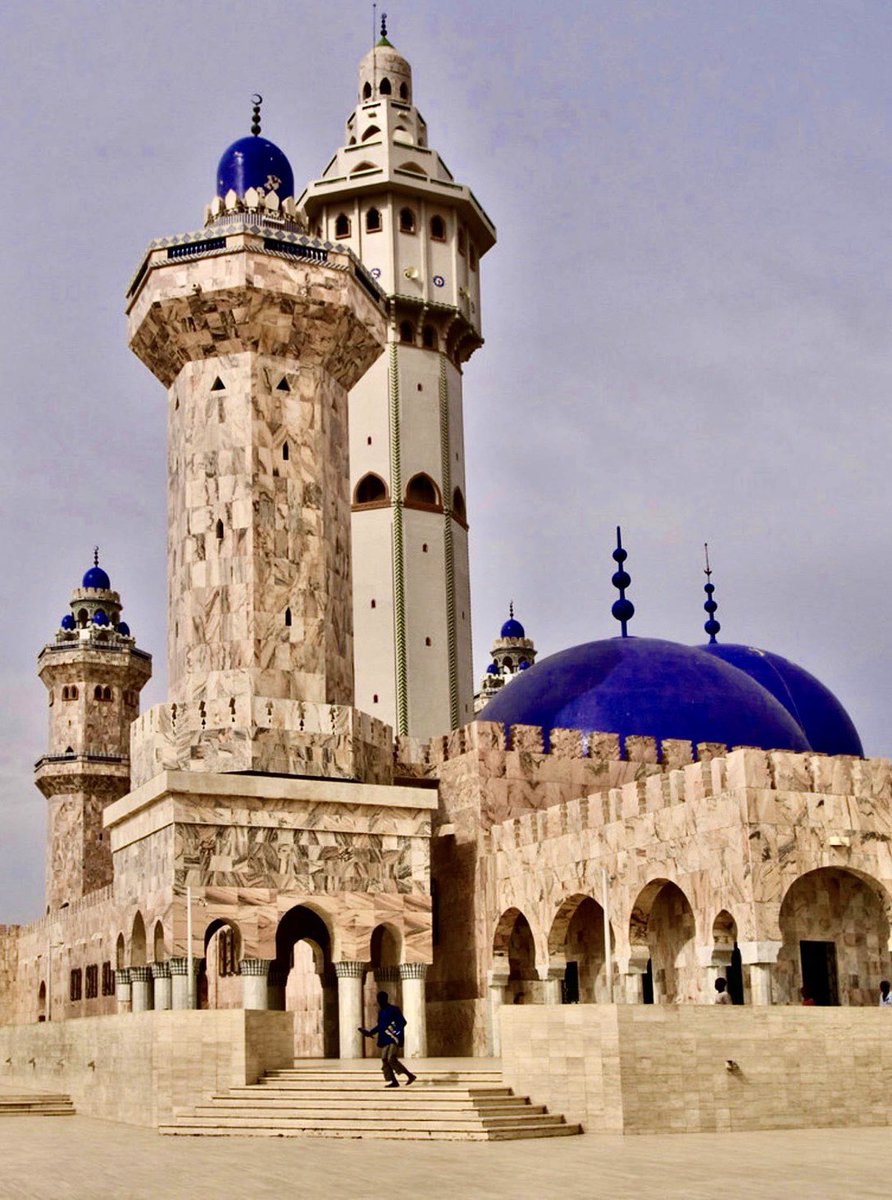
Discover more about Ancient Mosques in Africa, with sources of inspiration & information for this thread - and further reading:
baytalfann.com/post/ancient-a…
baytalfann.com/post/ancient-a…
• • •
Missing some Tweet in this thread? You can try to
force a refresh



